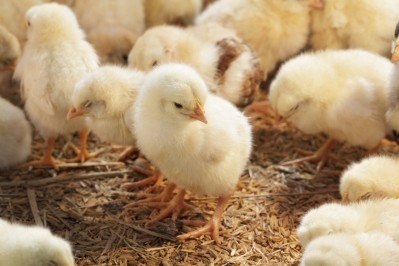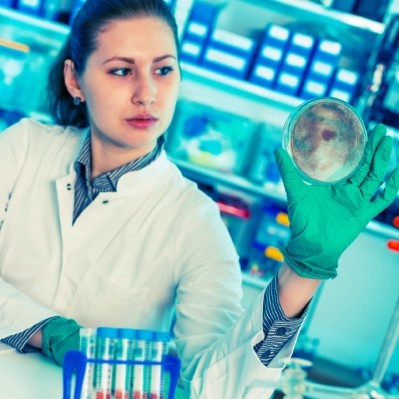FAO: More research, regulation needed for probiotics in feed

A report released earlier this month by the Food and Agricultural Organization of the United Nations, Probiotics in Animal Nutrition, sought to examine types, uses and the popularity of probiotics in feed for animal production systems.
The report covers current knowledge of how probiotics are fed or used in different types of animal production systems and the labeling systems or regulations used, said Harinder Makkar, report editor, in the study. It also reviewed how supplements are defined, made and areas for future efforts.
“The need for this review was prompted by the lack of comprehensive, science-based, and consolidated information on the impact of probiotics on monogastric and ruminant animals,” he said.
With the combined pressures of increased consumption and demand for animal-based proteins and global concerns regarding the inclusion of antibiotics in feed for animal production, the use and development of probiotics are expanding, he said. “Two of the most important objectives for using probiotics in animal feed are to maintain and improve the performance of the animal, and prevent and control enteric pathogens,” he added.
“This in-depth assessment will inform those that are interested in identifying and designing interventions that increase productivity of the livestock sector,” said Makkar. “It will also help to identify research and development priorities in the area.”
Probiotic use, production
Probiotics are defined as live micro-organisms that can be found to produce a health benefit when fed to a host, said the authors. However, there are several types including bacterial or non-bacterial; spore forming and non-spore forming; multi-species or single-species; and allochthonous or autochthonous – those are that are or aren’t likely to be found in an animal’s gastro-intestinal tract.
“Spore forming bacteria, particularly from the genus Bacillus, are increasingly being used as probiotics,” they authors said. “Bacillus spores are resistant to physical and environmental factors, such as heat, desiccation and UV radiation enabling them to maintain their viability during feed pelleting, storage and handling.”
In addition to multiple types of probiotics, the supplements also can be produced in different ways including through fermentation and in a growth medium, they said.
Use in animal production
One concern about commercially produced probiotics is that they are often poorly or incorrectly labeled, the authors said. And, dosage information for specific animal species is not always given.
Probiotics can boost broiler growth rates and mitigate enteric diseases, they said. Some types also have been demonstrated to increase feed intake and feed efficiency.
In pigs, probiotics have been used to improve performance by increasing weight gain and feed efficiency, they said. The supplements also have been fed to reduce morbidity, mortality and diarrhea.
But not all probiotics produce the same effect in pigs or poultry, they said. And the products may not act consistently throughout an animal’s lifespan.
An improvement in milk yield and energy efficiency or feed intake has been attributed to probiotics fed to dairy cattle, the authors said. Cattle growth rate and health also may be positively influenced.
“Based on a meta-analysis of papers published on the effects of yeast probiotics in all ruminant species reared for milk or meat, Desnoyers et al. (2009) found much variability in response, with an overall average increase in DMI of 0.44 g/kg body weight and total tract organic matter digestibility by 0.8%, effects too small to warrant probiotic addition,” they said. “However particular strains, increasing levels of inoculum addition, and feed compositions with a larger proportion of concentrates, have produced a better response than this average.”
The global market for probiotics used in animal health and production is predicted to potentially see growth rates of about 7.5%to 7.7% CARG and may reach $4.2bn-4.7bn by 2023, according to analyst reports.
Potential risks
Little work has been done exploring the potential for probiotics in animal feed to enter the human food chain, as the focus has been efficacy not safety, said report authors.
“The microbial genera and species used as probiotics in animal feed are generally considered safe,” they said. “The most serious risk posed by probiotic microbes in feed are, first, transfer of antibiotic resistance due to the presence of transmissible antibiotic resistance genes/determinants in some probiotic bacteria; and second, infections from the probiotic micro-organisms and presence of enterotoxins and emetic toxins in probiotic bacteria.”
Micro-organisms being considered or used in probiotic ought to be assessed for several risks, including potential for infection of animals or people, transfer of antibiotic resistance genes, and hyper-stimulation of the immune system, they said.
What’s next?
As the amount and types of probiotic expand to meet increased interest and demand from animal producers, questions remain about their use, said the authors.
“There are many promising effects of probiotics on animal performance and health,” they said. “However, the major limitation for the widespread and sustainable use of probiotics is the uncertainty in the reproducibility of effect, with a wide range of probiotic species, livestock species and husbandry practice highlighting the complexity of the interactions in animal production systems.”
More research is needed to better understand the relationship between specific probiotic products and animal species at different ages and points in development, they said. “Although the use of probiotics could be a potentially viable solution to address the issue of increasing antibiotic resistance, it requires much further study on the effect, mechanism of action and safety of probiotics, to obtain consistent effects and a similar economic benefit to AGPs,” they added.
Work also should examine host-probiotic interaction, explore mode of action and establish minimum required doses, said the authors. “Further studies are also required to determine whether the probiotics used in animal nutrition enter the human food chain and how they affect human health,” they added.
“International guidelines for the production, marketing and use of probiotics in animal nutrition are essential, especially with increasing globalization,” they said. “Such guidelines would help prevent the use of inappropriate micro-organisms as probiotics and maintain the efficacy of probiotics in achieving the targeted benefits.”








